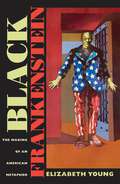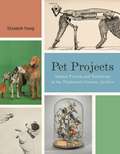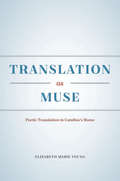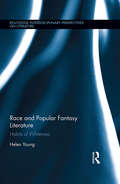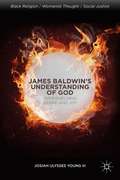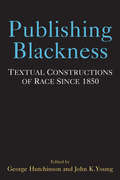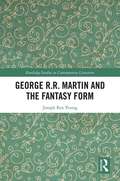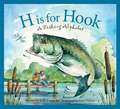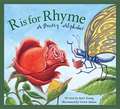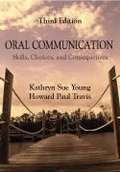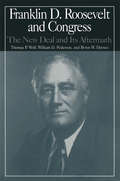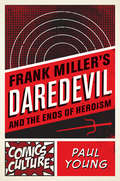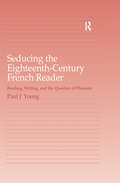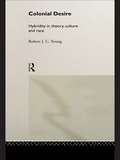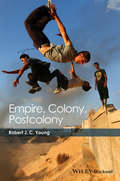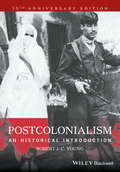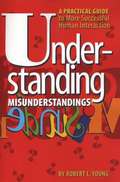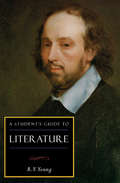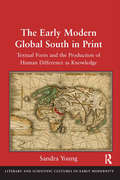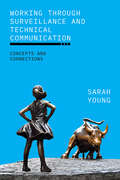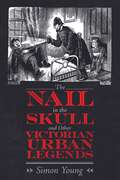- Table View
- List View
Black Frankenstein: The Making of an American Metaphor (America and the Long 19th Century #22)
by Elizabeth YoungFor all the scholarship devoted to Mary Shelley's English novel Frankenstein, there has been surprisingly little attention paid to its role in American culture, and virtually none to its racial resonances in the United States. In Black Frankenstein, Elizabeth Young identifies and interprets the figure of a black American Frankenstein monster as it appears with surprising frequency throughout nineteenth- and twentieth-century U.S. culture, in fiction, film, essays, oratory, painting, and other media, and in works by both whites and African Americans.Black Frankenstein stories, Young argues, effect four kinds of racial critique: they humanize the slave; they explain, if not justify, black violence; they condemn the slaveowner; and they expose the instability of white power. The black Frankenstein's monster has served as a powerful metaphor for reinforcing racial hierarchy--and as an even more powerful metaphor for shaping anti-racist critique. Illuminating the power of parody and reappropriation, Black Frankenstein tells the story of a metaphor that continues to matter to literature, culture, aesthetics, and politics.
Pet Projects: Animal Fiction and Taxidermy in the Nineteenth-Century Archive (Animalibus: Of Animals and Cultures #14)
by Elizabeth YoungIn Pet Projects, Elizabeth Young joins an analysis of the representation of animals in nineteenth-century fiction, taxidermy, and the visual arts with a first-person reflection on her own scholarly journey. Centering on Margaret Marshall Saunders, a Canadian woman writer once famous for her animal novels, and incorporating Young’s own experience of a beloved animal’s illness, this study highlights the personal and intellectual stakes of a "pet project" of cultural criticism.Young assembles a broad archive of materials, beginning with Saunders’s novels and widening outward to include fiction, nonfiction, photography, and taxidermy. She coins the term "first-dog voice" to describe the narrative technique of novels, such as Saunders’s Beautiful Joe, written in the first person from the perspective of an animal. She connects this voice to contemporary political issues, revealing how animal fiction such as Saunders’s reanimates nineteenth-century writing about both feminism and slavery. Highlighting the prominence of taxidermy in the late nineteenth century, she suggests that Saunders transforms taxidermic techniques in surprising ways that provide new forms of authority for women. Young adapts Freud to analyze literary representations of mourning by and for animals, and she examines how Canadian writers, including Saunders, use animals to explore race, ethnicity, and national identity. Her wide-ranging investigation incorporates twenty-first as well as nineteenth-century works of literature and culture, including recent art using taxidermy and contemporary film. Throughout, she reflects on the tools she uses to craft her analyses, examining the state of scholarly fields from feminist criticism to animal studies.With a lively, first-person voice that highlights experiences usually concealed in academic studies by scholarly discourse—such as detours, zigzags, roadblocks, and personal experience—this unique and innovative book will delight animal enthusiasts and academics in the fields of animal studies, gender studies, American studies, and Canadian studies.
Pet Projects: Animal Fiction and Taxidermy in the Nineteenth-Century Archive (Animalibus)
by Elizabeth YoungIn Pet Projects, Elizabeth Young joins an analysis of the representation of animals in nineteenth-century fiction, taxidermy, and the visual arts with a first-person reflection on her own scholarly journey. Centering on Margaret Marshall Saunders, a Canadian woman writer once famous for her animal novels, and incorporating Young’s own experience of a beloved animal’s illness, this study highlights the personal and intellectual stakes of a “pet project” of cultural criticism.Young assembles a broad archive of materials, beginning with Saunders’s novels and widening outward to include fiction, nonfiction, photography, and taxidermy. She coins the term “first-dog voice” to describe the narrative technique of novels, such as Saunders’s Beautiful Joe, written in the first person from the perspective of an animal. She connects this voice to contemporary political issues, revealing how animal fiction such as Saunders’s reanimates nineteenth-century writing about both feminism and slavery. Highlighting the prominence of taxidermy in the late nineteenth century, she suggests that Saunders transforms taxidermic techniques in surprising ways that provide new forms of authority for women. Young adapts Freud to analyze literary representations of mourning by and for animals, and she examines how Canadian writers, including Saunders, use animals to explore race, ethnicity, and national identity. Her wide-ranging investigation incorporates twenty-first as well as nineteenth-century works of literature and culture, including recent art using taxidermy and contemporary film. Throughout, she reflects on the tools she uses to craft her analyses, examining the state of scholarly fields from feminist criticism to animal studies.With a lively, first-person voice that highlights experiences usually concealed in academic studies by scholarly discourse—such as detours, zigzags, roadblocks, and personal experience—this unique and innovative book will delight animal enthusiasts and academics in the fields of animal studies, gender studies, American studies, and Canadian studies.
Translation as Muse: Poetic Translation in Catullus's Rome
by Elizabeth Marie YoungPoetry is often said to resist translation, its integration of form and meaning rendering even the best translations problematic. Elizabeth Marie Young disagrees, and with Translation as Muse, she uses the work of the celebrated Roman poet Catullus to mount a powerful argument that translation can be an engine of poetic invention. Catullus has long been admired as a poet, but his efforts as a translator have been largely ignored. Young reveals how essential translation is to his work: many poems by Catullus that we tend to label as lyric originals were in fact shaped by Roman translation practices entirely different from our own. By rereading Catullus through the lens of translation, Young exposes new layers of ingenuity in Latin poetry even as she illuminates the idiosyncrasies of Roman translation practice, reconfigures our understanding of translation history, and questions basic assumptions about lyric poetry itself.
The Cambridge Companion to African American Theatre
by Harvey YoungThis Companion provides a comprehensive overview of African American theatre, from the early nineteenth century to the present day. Along the way, it chronicles the evolution of African American theatre and its engagement with the wider community, including discussions of slave rebellions on the national stage, African Americans on Broadway, the Harlem Renaissance, African American women dramatists, and the 'New Negro' and 'Black Arts' movements. Leading scholars spotlight the producers, directors, playwrights and actors whose efforts helped to fashion a more accurate appearance of black life on stage, and reveal the impact of African American theatre both within the United States and further afield. Chapters also address recent theatre productions in the context of political and cultural change and ask where African American theatre is heading in the twenty-first century.
Race and Popular Fantasy Literature: Habits of Whiteness (Routledge Interdisciplinary Perspectives on Literature)
by Helen YoungThis book illuminates the racialized nature of twenty-first century Western popular culture by exploring how discourses of race circulate in the Fantasy genre. It examines not only major texts in the genre, but also the impact of franchises, industry, editorial and authorial practices, and fan engagements on race and representation. Approaching Fantasy as a significant element of popular culture, it visits the struggles over race, racism, and white privilege that are enacted within creative works across media and the communities which revolve around them. While scholars of Science Fiction have explored the genre’s racialized constructs of possible futures, this book is the first examination of Fantasy to take up the topic of race in depth. The book’s interdisciplinary approach, drawing on Literary, Cultural, Fan, and Whiteness Studies, offers a cultural history of the anxieties which haunt Western popular culture in a century eager to declare itself post-race. The beginnings of the Fantasy genre’s habits of whiteness in the twentieth century are examined, with an exploration of the continuing impact of older problematic works through franchising, adaptation, and imitation. Young also discusses the major twenty-first century sub-genres which both re-use and subvert Fantasy conventions. The final chapter explores debates and anti-racist praxis in authorial and fan communities. With its multi-pronged approach and innovative methodology, this book is an important and original contribution to studies of race, Fantasy, and twenty-first century popular culture.
James Baldwin’s Understanding of God
by Josiah Ulysses Young IIIJames Baldwin's Understanding of God focuses on Baldwin's experiences as a gifted black writer who fought valiantly against racism and wrote openly about homosexual relationships. Baldwin's God is a "mysteriously impersonal" force he calls love, 'something . . . like a fire, like the wind, something which can change you. ' For Baldwin, "To be with God is really to be involved with some enormous, overwhelming desire, and joy, and power which you cannot control, which controls you. " Young covers James Baldwin's life from his mid-teens to his death through accounts and analyses of his essays and novels. Sometimes his "theology" - what he has to say about his "God" - comes straight from his text; other times Young deduces it from his nonfiction prose and the implications of his novels and their protagonists. Young places those works in the context of several historic events that were taking place in the United States at that time.
Publishing Blackness: Textual Constructions of Race Since 1850
by John Young George HutchinsonFrom the white editorial authentication of slave narratives, to the cultural hybridity of the Harlem Renaissance, to the overtly independent publications of the Black Arts Movement, to the commercial power of Oprah's Book Club, African American textuality has been uniquely shaped by the contests for cultural power inherent in literary production and distribution. Always haunted by the commodification of blackness, African American literary production interfaces with the processes of publication and distribution in particularly charged ways. An energetic exploration of the struggles and complexities of African American print culture, this collection ranges across the history of African American literature, and the authors have much to contribute on such issues as editorial and archival preservation, canonization, and the "packaging" and repackaging of black-authored texts. Publishing Blackness aims to project African Americanist scholarship into the discourse of textual scholarship, provoking further work in a vital area of literary study.
George R.R. Martin and the Fantasy Form
by Joseph Rex YoungUsing the frameworks of literary theory relevant to modern fantasy, Dr. Joseph Young undertakes a compelling examination of George R. R. Martin’s A Song of Ice and Fire and his employment of the structural demands and thematic aptitudes of his chosen genre. Examining Martin’s approaches to his obligations and licenses as a fantasist, Young persuasively argues that the power of A Song of Ice and Fire derives not from Martin’s abandonment of genre convention, as is sometimes asserted, but from his ability to employ those conventions in ways that further, rather than constrain, his authorial program. Written in clear and accessible prose, George R. R. Martin and the Fantasy Form is a timely work which encourages a reassessment of Martin and his approach to his most famous novels. This is an important work for both students and critics of Martin’s work and argues for a reading of A Song of Ice and Fire as a wide-ranging example of what modern fantasy can accomplish when employed with an eye to its capabilities and purpose.
H Is for Hook: A Fishing Alphabet
by Judy YoungFrom A to Z all that is fishing is explained in this illustrated picture book using poetry and prose. Topics include angler, catch and release, fly-fishing, tackle, and more.
R is for Rhyme: A Poetry Alphabet
by Judy YoungBring the magic of poetry to life with R is for Rhyme: A Poetry Alphabet. From acrostics and ballads to meter and metaphor, author and poet Judy Young has written a delightful collection of poems to illustrate poetic tools, terms and techniques. Each term or technique is demonstrated in an accompanying poem so readers can see the method at work. Whether haiku or rap, sonnets or cinquain, budding writers of all ages will be inspired to put their imaginations to work crafting their own poems.
S Is for Show Me: A Missouri Alphabet
by Judy Young[From the dust jacket:] "Welcome to the Show Me State. It's Missouri and I think it's great! If you'll come along with me I'll show you Missouri from A to Z. What a fun way to learn about Missouri! Author and poet, Judy Young, and illustrator, Ross Young, invite children to go with them on an alphabetical adventure through Missouri. They will "show you" the Show Me State with poems, pictures, and facts. S is for Show Me: A Missouri Alphabet is a book for all ages. Young children will enjoy learning the alphabet. Older children and adults will learn about Missouri's history, geography, famous people, events, plants, and wildlife. Everyone, young and old, will love to look at the colorful illustrations and "show each other" the hidden details in the pictures. Flip through pages and enjoy the poems that "show off" the Show Me State." Satisfy your curiosity about any of the states in the United States by looking in the Bookshare collection for the alphabet books for the state where you live or the states where your family and friends live. Some feature picture descriptions including, P is for Potato, B is for Buckeye, S is for Sunflower, S is for Show Me, and C is for Centennial.
The Philosophy of Tragedy
by Julian YoungThis book is a full survey of the philosophy of tragedy from antiquity to the present. From Aristotle to Žižek the focal question has been: why, in spite of its distressing content, do we value tragic drama? What is the nature of the 'tragic effect'? Some philosophers point to a certain kind of pleasure that results from tragedy. Others, while not excluding pleasure, emphasize the knowledge we gain from tragedy – of psychology, ethics, freedom or immortality. Through a critical engagement with these and other philosophers, the book concludes by suggesting an answer to the question of what it is that constitutes tragedy 'in its highest vocation'. This book will be of equal interest to students of philosophy and of literature.
Oral Communication: Skills, Choices, and Consequences
by Kathryn Sue Young Howard Paul TravisThis book is designed to help you recognize the importance of your words and actions in communication. The goals for this undergraduate communication textbook are to: (1) engage you to think about the skills, choices, and consequences of your communication; (2) create a book you will want to read; and (3) convince you that success can be yours if you make solid choices in your communication style.
The M.E.Sharpe Library of Franklin D.Roosevelt Studies: Franklin D.Roosevelt and Congress - The New Deal and it's Aftermath (Library Of Franklin D. Roosevelt Studies #Vol. 2)
by Nancy Beck Young William D. Pederson Byron W. DaynesThis book assesses contrasting interpretations of President Roosevelt's relations with the Nye Committee. It explores the complexity confronting Rayburn in weighing the factors that influenced his actions during the New Deal portion of his near half century in Congress.
Frank Miller's Daredevil and the Ends of Heroism
by Paul YoungIn the late 1970s and early 1980s, writer-artist Frank Miller turned Daredevil from a tepid-selling comic into an industry-wide success story, doubling its sales within three years. Lawyer by day and costumed vigilante by night, the character of Daredevil was the perfect vehicle for the explorations of heroic ideals and violence that would come to define Miller's work. Frank Miller's Daredevil and the Ends of Heroism is both a rigorous study of Miller's artistic influences and innovations and a reflection on how his visionary work on Daredevil impacted generations of comics publishers, creators, and fans. Paul Young explores the accomplishments of Miller the writer, who fused hardboiled crime stories with superhero comics, while reimagining Kingpin (a classic Spider-Man nemesis), recuperating the half-baked villain Bullseye, and inventing a completely new kind of Daredevil villain in Elektra. Yet, he also offers a vivid appreciation of the indelible panels drawn by Miller the artist, taking a fresh look at his distinctive page layouts and lines. A childhood fan of Miller's Daredevil, Young takes readers on a personal journey as he seeks to reconcile his love for the comic with his distaste for the fascistic overtones of Miller's controversial later work. What he finds will resonate not only with Daredevil fans, but with anyone who has contemplated what it means to be a hero in a heartless world. Other titles in the Comics Culture series include Twelve-Cent Archie, Wonder Woman: Bondage and Feminism in the Marston/Peter Comics, 1941-1948, and Considering Watchmen: Poetics, Property, Politics.
Seducing the Eighteenth-Century French Reader: Reading, Writing, and the Question of Pleasure
by Paul J. YoungAs he demonstrates that narratives of seduction function as a master plot for French literature in the eighteenth century, Paul Young argues that the prevalence of this trope was a reaction to a dominant cultural discourse that coded the novel and the new practice of solitary reading as dangerous, seductive practices. Situating his study in the context of paintings, educational manuals, and criticism that caution against the act of reading, Young considers both canonical and lesser-known works by authors that include Rousseau, Sade, Bastide, Laclos, Crébillon fils, and the writers of two widely read libertine novels. How these authors responded to a cultural climate that viewed literature, and especially the novel, as seductive, sheds light on the perils and pleasures of authorship, the ways in which texts interact with the larger cultural discourse, and what eighteenth-century texts tell us about the dangers of reading or writing. Ultimately, Young argues, the seduction not in the text, but by the text raises questions about the nature of pleasure in eighteenth-century French literature and culture.
Colonial Desire: Hybridity in Theory, Culture and Race
by Robert J. YoungThe language of contemporary cultural theory shows remarkable similarities with the patterns of thought which characterised Victorian racial theory. Far from being marked by a separation from the racialised thinking of the past, Colonial Desire shows we are operating in complicity with historical ways of viewing 'the other', both sexually and racially.Colonial Desire is a controversial and bracing study of the history of Englishness and 'culture'. Robert Young argues that the theories advanced today about post-colonialism and ethnicity are disturbingly close to the colonial discourse of the nineteenth century. 'Englishness', Young argues, has been less fixed and stable than uncertain, fissured with difference and a desire for otherness.
Empire, Colony, Postcolony (Coursesmart Ser.)
by Robert J. YoungEmpire, Colony, Postcolony provides a clear exposition of the historical, political and ideological dimensions of colonialism, imperialism, and postcolonialism, with clear explanations of these categories, which relate their histories to contemporary political issues. The book analyzes major concepts and explains the meaning of key terms. The first book to introduce the main historical and cultural parameters of the different categories of empire, colony, postcolony, nation, and globalization and the ways in which they are analyzed today Explains in clear and accessible language the historical and theoretical origins of postcolonial theory as well as providing a postcolonial perspective on the formations of the contemporary world Written by an acknowledged expert on postcolonialism
Postcolonialism: An Historical Introduction (Very Short Introductions Ser.)
by Robert J. YoungThis seminal work—now available in a 15th anniversary edition with a new preface—is a thorough introduction to the historical and theoretical origins of postcolonial theory. Provides a clearly written and wide-ranging account of postcolonialism, empire, imperialism, and colonialism, written by one of the leading scholars on the topic Details the history of anti-colonial movements and their leaders around the world, from Europe and Latin America to Africa and Asia Analyzes the ways in which freedom struggles contributed to postcolonial discourse by producing fundamental ideas about the relationship between non-western and western societies and cultures Offers an engaging yet accessible style that will appeal to scholars as well as introductory students
Understanding Misunderstandings: A Practical Guide to More Successful Human Interaction
by Robert L. YoungHave you ever meant one thing, but said another? Reacted angrily when no offense was intended? Wished that the earth would open up and swallow you? Understanding Misunderstandings will help you get out and stay out of these difficulties. Robert L. Young explains why many common types of misunderstandings arise and how they can be avoided or corrected. In the first part of the book, he breaks the process of misunderstanding down into stages, showing how it can occur when we misspeak, mishear, misinterpret, or react in inappropriate ways. In the second part, he expertly analyzes the kinds of misunderstandings that can arise from differences in culture, social class, race and ethnicity, and gender. Real-life examples illustrate many of the problems and solutions he describes. Because misunderstanding can destroy friendships and marriages, wreck careers, and lead to clashes between whole segments of society, understanding and diffusing it is of the utmost importance. This reader-friendly book provides the practical guidance to do just that. Educators, business people, psychologists, parents-in fact, everyone who interacts with other people-will benefit from it.
A Student's Guide to Literature: Literature Guide (ISI Guides to the Major Disciplines)
by R.V. YoungExplore the works of Western literature that have stood the test of time—and discover titles to enrich your own book collection.A Student&’s Guide to Literature takes up these questions: In a time of mass culture and pulp fiction, can great literature still be discerned, much less defended? Why is literature so compelling? What should we read? Literary scholar R. V. Young addresses these timely issues in this guide to Western literature and poetry. He demonstrates that literature liberates the mind from cultural and temporal provincialism by expanding our intellectual and emotional horizons. Learn how great fiction and poetry are integral to a liberal education, and visit the classic works of literature again—or for the first time.
The Early Modern Global South in Print: Textual Form and the Production of Human Difference as Knowledge (Literary And Scientific Cultures Of Early Modernity Ser.)
by Sandra YoungEarly modern geographers and compilers of travel narratives drew on a lexicon derived from cartography’s seemingly unchanging coordinates to explain human diversity. Sandra Young’s inquiry into the partisan knowledge practices of early modernity brings to light the emergence of the early modern global south. Young proposes a new set of terms with which to understand the racialized imaginary inscribed in the scholarly texts that presented the peoples of the south as objects of an inquiring gaze from the north. Through maps, images and even textual formatting, equivalences were established between ’new’ worlds, many of them long known to European explorers, she argues, in terms that made explicit the divide between ’north’ and ’south.’ This book takes seriously the role of form in shaping meaning and its ideological consequences. Young examines, in turn, the representational methodologies, or ’artes,’ deployed in mapping the ’whole’ world: illustrating, creating charts for navigation, noting down observations, collecting and cataloguing curiosities, reporting events, formatting materials, and editing and translating old sources. By tracking these methodologies in the lines of beauty and evidence on the page, we can see how early modern producers of knowledge were able to attribute alterity to the ’southern climes’ of an increasingly complex world, while securing their own place within it.
Working through Surveillance and Technical Communication: Concepts and Connections (SUNY series, Studies in Technical Communication)
by Sarah YoungWhat is surveillance, and why should we care? Why are those who use technology susceptible to being both agents and targets of contemporary surveillance practices? Working Through Surveillance and Technical Communication addresses these questions, discussing what it means to engage in surveillance, examining why this participation may be problematic, and offering entry points into assessing one's ethical and socially just involvement with surveillance. Further, the book suggests ways to resist both individually and collectively, and it offers pedagogical entry points for those looking to talk about surveillance with others. Led by the central questions, "How are technical communicators also surveillance workers?" and "Why does this matter for technical communication and surveillance scholarship?" the text uses the example of Edward Snowden to illustrate how technical communicators and surveillance workers exist on an often-overlapping range. Sarah Young highlights the potentially discriminatory nature of surveillance and argues that recognizing and evaluating surveillance in is increasingly important in a data-driven world.Open Access funded by Erasmus University Rotterdam Library in support of open science initiatives. It can be found in the SUNY Open Access Repository at https://soar.suny.edu/handle/20.500.12648/8546.
The Nail in the Skull and Other Victorian Urban Legends
by Simon YoungWinner of the 2023 Brian McConnell Book Award from the International Society for Contemporary Legend ResearchIn the last fifty years, folklorists have amassed an extraordinary corpus of contemporary legends including the “Choking Doberman,” the “Eaten Ticket,” and the “Vanishing Hitchhiker.” But what about the urban legends of the past? These legends and tales have rarely been collected, and when they occasionally appear, they do so as ancestors or precursors of the urban legends of today, rather than as stories in their own right. In The Nail in the Skull and Other Victorian Urban Legends, Simon Young fills this gap for British folklore (and for the wider English-speaking world) of the 1800s. Young introduces seventy Victorian urban legends ranging from “Beetle Eyes” to the “Shoplifter’s Dilemma” and from “Hands in the Muff” to the “Suicide Club.” While a handful of these stories are already known, the vast majority have never been identified, and they have certainly never received scholarly treatment. Young begins the volume with a lengthy introduction assessing nineteenth-century media, emphasizing the importance of the written word to the perpetuation and preservation of these myths. He draws on numerous nineteenth-century books, periodicals, and ephemera, including digitized newspaper archives—particularly the British Newspaper Archive, an exciting new hunting ground for folklorists. The Nail in the Skull and Other Victorian Urban Legends will appeal to an academic audience as well as to anyone who is interested in urban legends.
